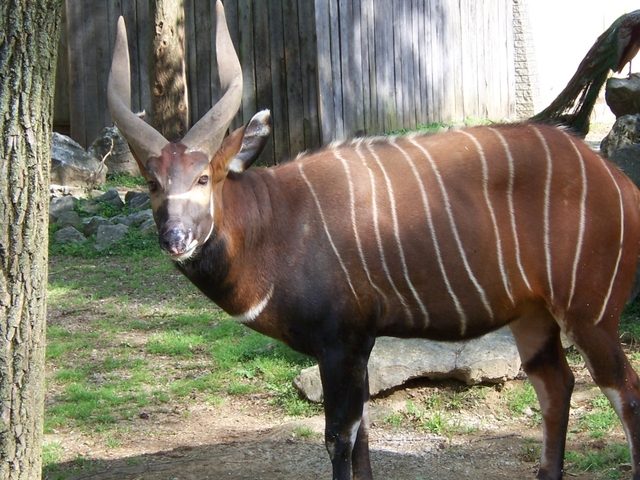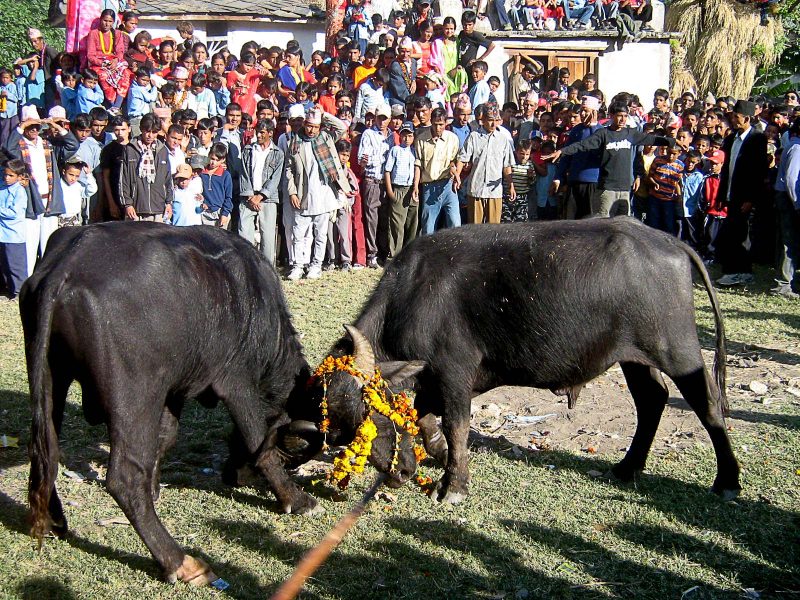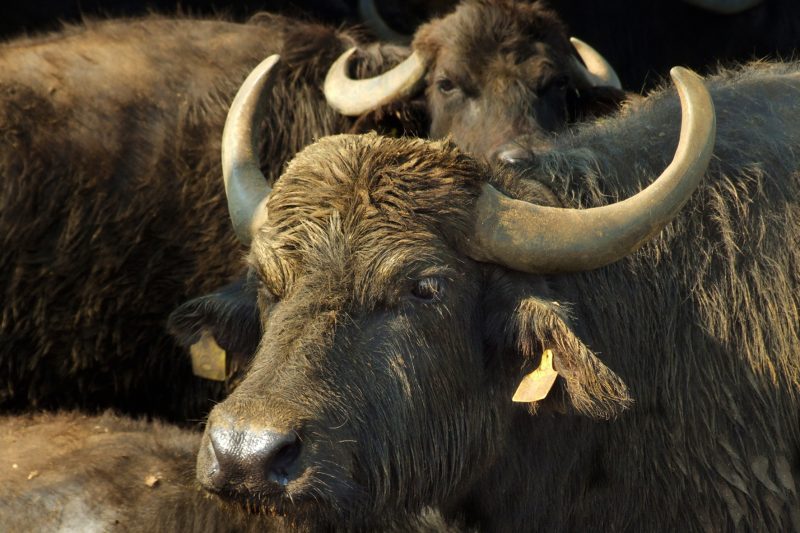The Bongo In The Kenyan Savannahs
Status of bongos
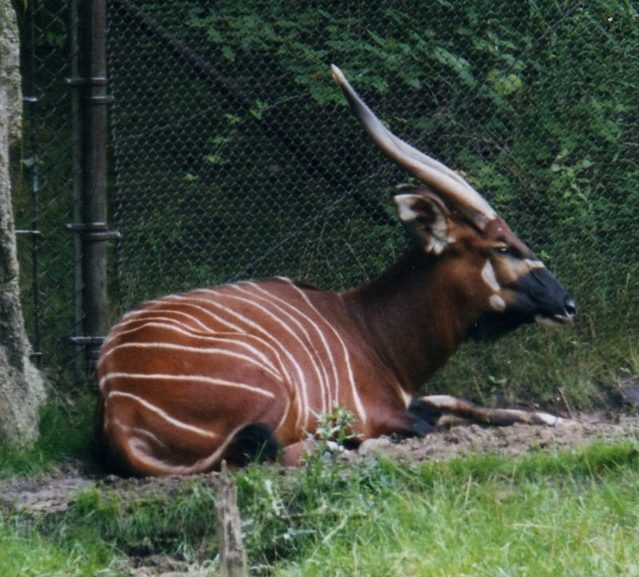
Bongo
The lovely bongo antelope occurs in the remote forests of Kenya. Interestingly, these less-known Kenyan antelopes are the biggest among the surviving species. Based on the research done so far, biologists have recorded two living sub-species. The populations of these sub-species have declined so much that they are considered to be threatened in some areas and even listed as extinct in some others. There are reports that the mountain bongos now live in only four regions of Kenya. This rapid population decrease throughout their natural range is mainly due to hunting, habitat loss and deforestation.
Beautifully patterned body
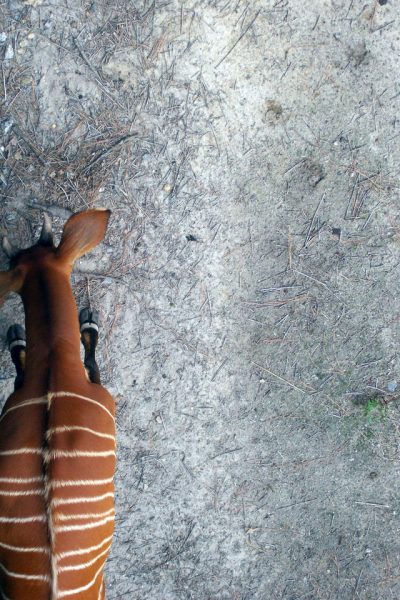
The bongo of Kenya is a heavy-bodied and large antelope with stunningly decorated torsos. Their bodies have glossy and chestnut or orange colored coat with perpendicular white streaks that help them to stay inconspicuous in the thick forest. Also, they have white patterns on their face, a crescent-like white figure on their throat and white stripe between the nose and eyes. A very narrow mane runs along its torso all the way down to the hind. Their strong legs have bands of black and white stripes, and their tail is tufted at the tip. Both male and female bongos have large ears giving them sensitive hearing that they need for their survival. To cool down in the extreme heat during summer, they wallow in mud which they rub onto a tree.
Horns with twists
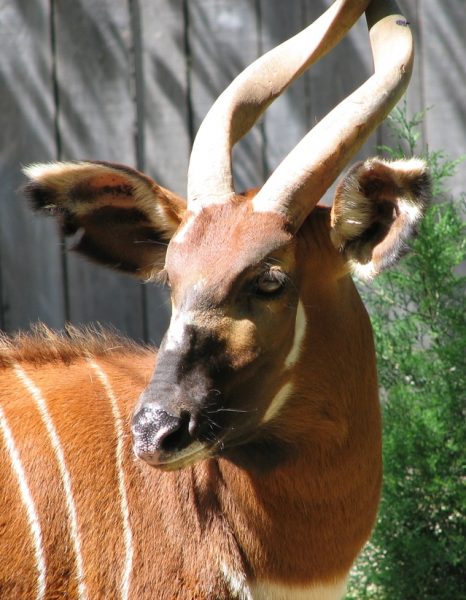
One of the distinctive characteristics of bongos is their spiraled horns with twists. The male bongo’s long elegant horns spiral 80 to 90 or even up to 100 cm in length. But the horns of the females are shorter, lighter-coloured and less coiled than that of the males. When they run, they keep their horns very close against their body to prevent getting tangled up.
Very rarely seen
A bongo is an elusive and shy animal. It leads a nocturnal lifestyle. Due to these reasons, it is rarely seen by people. As with many antelope species, bongos flee almost immediately when they feel alarmed and can disappear quickly into the forest.
Calls to communicate
Apart from bleating, they produce a variety of calls to communicate when they are in trouble and also to warn others of danger. They include grunts, moos and snorts.
Making of calves
Female bongos occur in the Kenyan savannas either on their own or with large herds that can contain up to 50 members of the same sex. Male bongos, on the other hand, are solitary and only come into contact with their own with the intention of breeding with these females. Interestingly, almost all mating of bongos tends to happen between October and January. If she gets pregnant, she gives birth to a single calf after a gestation period of nine months. To try and protect the calf from predators, the mother gives birth in dense vegetation where she leaves it lying for about a week, during which she regularly returns to nurse. When the calf is capable enough to fend for itself, they both merge with other females and their young. The calves grow fast, and their horns start to show at three or four months. Weaning usually occurs at six months, but calves remain with the herd much longer than that.
Nutritious plant matter
The bongo feed only on plant matter to gain the nutrition they need to survive because it is an herbivore. Food passes through their system very slowly compared to other animals, and this maximizes the nutritional intake. They are selective browsers that feed on shoots, sprouts, roots, leaves, twigs, bark and grasses. The bongo has a prehensile tongue which enables them to reach leaves higher up, grip onto them and strip them from the branches. This adapted organ of its body also helps them when pulling roots on the ground or breaking twigs from trees.
Threats to survival
Bongos tend to be most active during dawn and dusk and the time in between the two. And they browse only during the night so that they can be safe from the carnivorous killers with whom they share their habitats. But they occasionally forage during the day without leaving their surrounding dense vegetation. Among the various marauders in their surroundings, leopards and lions are the most common threat of bongos. But the young calves are also vulnerable to predators from hyenas and pythons throughout much of their distribution. Another danger to bongos that is a significant concern to biologists and field scientists is their susceptibility to diseases. Deforestation brought on by greedy human beings has also obliterated much of their once wide range. However, they are at the most prominent risk from humans who hunt them both directly and by trapping snares.
There is a fascinating superstition surrounding the animal by the native people of Kenya. They believe that just touching the bongo with their fingertips or a light brush will cause spasms. Therefore thankfully, in such areas where these gullible people live, bongos are not too affected by hunting or poaching. However, in this day and age, as modernity creeps into the daily lives of the bush people, it does not take much to change such attitudes. Once they realise that these are indeed false beliefs, then the future survival of bongos will be unpredictable.
Frequently Asked Questions About Bongo
To receive a colourful digibook about animals with videos, images and text, please fill out the following form or simply email us on safaris@safari-center.com

